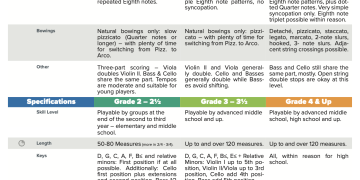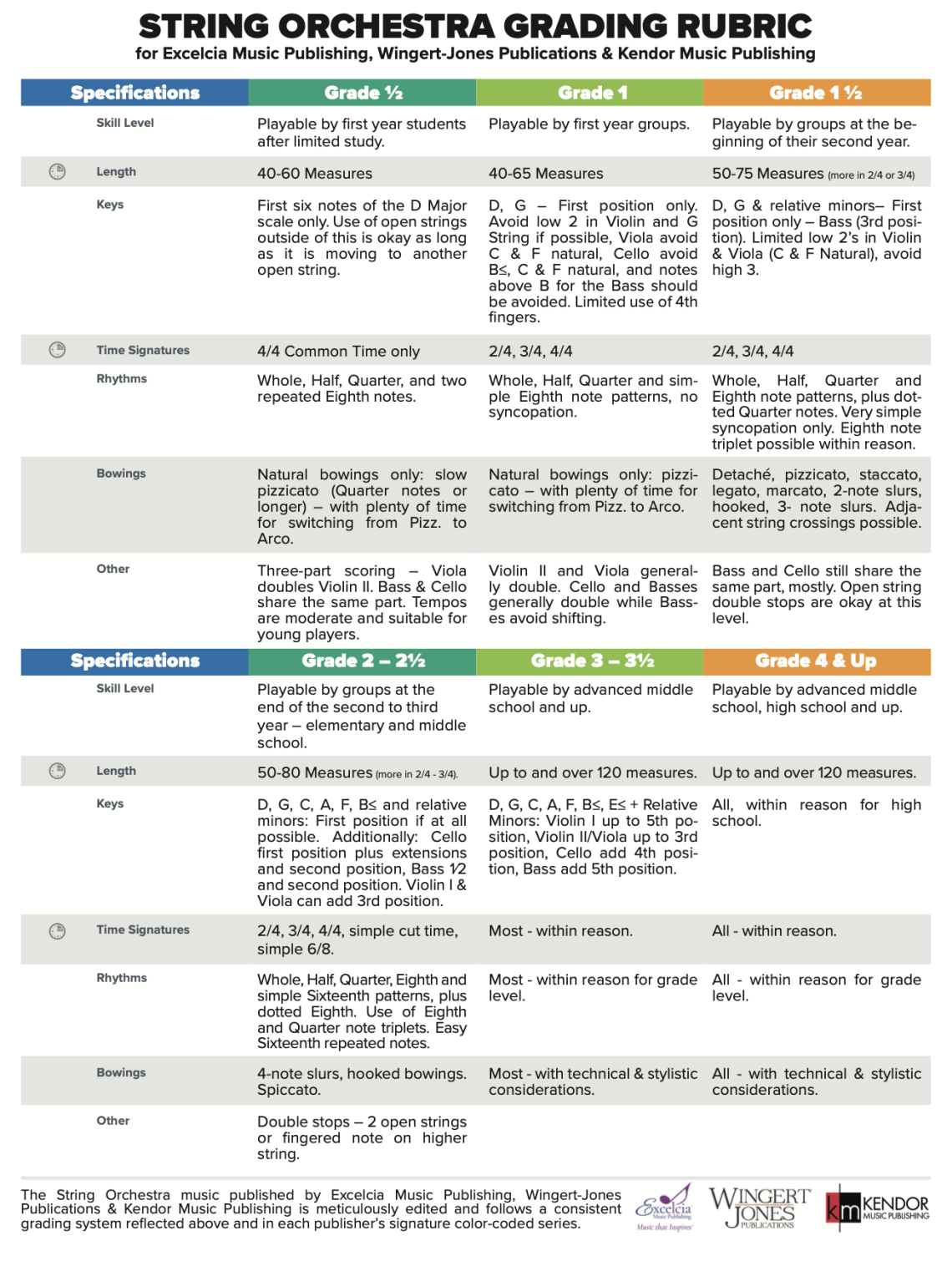Selecting music for your ensemble is like shopping for yogurt in the dairy aisle at the grocery store. You’ll quickly find yourself looking at many options, all with their own unique flavors and packaging, which can feel overwhelming.
The variety found in educational music can feel the same, but the good news is this: the building blocks of music have remained relatively the same, and there are a lot of common threads between this logical progression of complexity and fundamental music development.
We can look at grade levels as scaffolding for music fundamentals, which add concepts and maturity of skills as the musician progresses in proficiency. It is important to note that among publishers, retailers, and state organizations, grade levels might not line up entirely, but they tend to be quite close. In some cases, this can be manifested in the form of half grade levels. A grade 1 in one system might not match another’s criteria exactly, but more than likely it is just half a level away in either direction.
Knowing that, the task becomes deciding what level matches your ensemble’s ability as a group, as well as the individual strengths and limitations of each player. With so much on the line, where do you start?
The following areas are commonly shared considerations across grading rubrics and will help you determine the grade level that fits your ensemble best. For more specific information on these topics, see the included rubric that is used by Excelcia Music Publishing, Wingert-Jones Publications, and Kendor Music Publishing.
Instrumentation
Generally, the string orchestra is a fairly consistent ensemble as far as instrumentation goes, with the typical ensemble consisting of Violin (I & II), Viola, Cello, and Bass. In the lower levels, part independence is more restricted, and you’ll encounter much more doubling. It is common in the youngest levels to have Violin II and Viola double, and likewise with Cello and Bass. Instrument lines become more independent and rhythm less homogeneous as levels increase. If you are looking for music for a younger ensemble, checking for these doubling pairs is a safe start.
Range
Range can be a deceptive consideration when selecting music. Each instrument is unique, and it is challenging for any piece of music to provide the most comfortable range for each individual player. It is therefore critical to carefully evaluate each part to make sure that they are suitable for your ensemble. Make sure ranges are not too extreme, and be cautious of range consistency across the ensemble. For example, if the piece overall feels like a grade 1 but the Violin moves beyond first position on the e string, it may not be a good fit for your students.
Key
For the string instruments, key is arguably the most important factor in grade level decisions. There is a progression in the way scales are taught alongside finger patterns. To establish strong fundamentals, it is easier to begin with keys that feel more comfortable for younger students. For younger players, the keys of D and G allow for comfortable finger patterns and ranges for the instruments. Younger levels also avoid raised or lowered finger positions.
Length and techniques (Bowings)
The length of a work can be a deciding factor in a piece’s overall difficulty level. Younger students have less endurance than more experienced musicians, and so their music is less complicated in form and structure.
Similarly, techniques such as pizzicato or Col Legno require more focus and endurance than some younger musicians have so the frequency and intensity of those techniques can determine a higher or lower grade level.
Likewise, bowing patterns which are more natural and avoid retakes or slurs will generally be found at lower levels. Bowings can be a great resource but depending on the style can add or remove rigor and make easier pieces seem harder.
Time Signatures and Rhythms
Time signatures and rhythms progress across grade levels in a similar manner. Generally taught in order from simplest to more complex, time signatures and rhythmic density play a key role in level difficulty. In upper-level works, time signatures can alternate frequently while in the lower levels they remain for much longer lengths of time. Rhythms are multifaceted in that they can become more complex on their own, as well as in their relationships vertically across the ensemble. If you are looking for easier music, search for works that use only one simple time signature and a homogeneous rhythm across the ensemble.
Complexity
“Music” can make a grade 1 play like a grade 3. While the technical demands and range of a work might make it seem easy, musical and emotional demands can make a work more challenging to play. This is typically evident in slower, more lyrical works.
Something we should think about as we teach an art that sometimes speaks to the world around us, is the intellectual maturity of our students. The perceived difficulty of some music can be rooted beyond the physical act of making music, which falls outside of music fundamentals, etc. As the subject matter becomes more complex, so too can the demand on the musician.
Diving into these considerations will help you navigate the many variations of levels across state rubrics and publisher guidelines. Remember, you know your ensemble best, and navigating through all these topics with ease and a clear vision will set your students up for their best possible success.
ExcelciaMusic.com





























